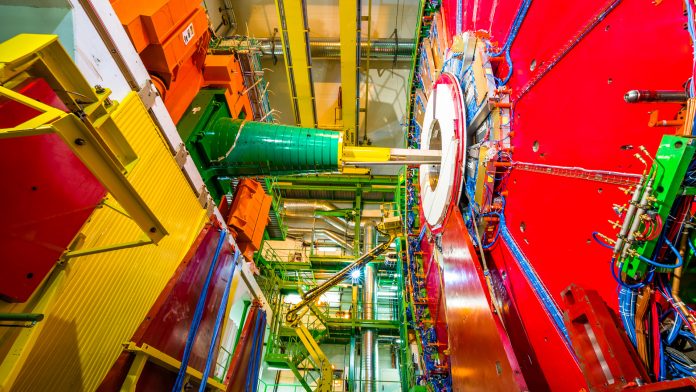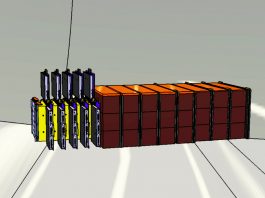The CMS Experiment at CERN has successfully measured the mass of the top-quark with greater precision than ever before.
In order to understand the world at its smallest scale, it is vital to have an accurate assessment of the top-quark mass.
Measuring the mass of the top-quark
Now, a novel study at the CMS collaboration at the Large Hadron Collider (LHC) has successfully achieved the most precise measurement of the mass of the top-quark, which is the heaviest known elementary particle.
The most recent CMS collaboration findings determine the value of the top-quark mass with an unparalleled precision of approximately 0.22%. The significant gain in accuracy since previous measurements comes from novel analysis techniques and enhanced procedures to treat different uncertainties consistently and simultaneously in the measurement.
Understanding the Universe
Having an intricate understanding of the heaviest elementary particle is important as it enables testing of the internal consistency of the mathematical description of all elementary particles, known as the Standard Model.
For instance, if the masses of the W boson and Higgs boson are known accurately, the top-quark mass can be calculated by the Standard Model. Similarly, by utilising the top-quark and Higgs-boson masses, the W-boson mass can be projected.
Remarkably, despite the significant progress that has been made so far, the theoretical-physics definition of mass, which has to do with the effect of quantum-physics corrections, is still very difficult to figure out for the top quark.
On top of this, our understanding of the stability of the Universe relies on our collective knowledge of the Higgs-boson and top-quark masses. Currently, we only know that the Universe is very close to a metastable state with the accuracy of the existing measurements of the top-quark mass. If the top-quark mass was even marginally different, the Universe would be less stable in the long term, possibly dying in a violent event like the Big Bang.
Using data collected by the CMS detector
In order to make their most recent measurement of the top-quark mass, the CMS collaboration team employed data from proton–proton LHC collisions collected by the CMS detector in 2016. The researchers assessed five different properties of collision events whereby a pair of top quarks is produced, as an alternative to the three properties that were measured in prior investigations. These properties depend on the top-quark mass.
Additionally, the group at CMS successfully undertook an exceptionally accurate calibration of the CMS data and acquired a detailed understanding of the remaining experimental and theoretical uncertainties and their interdependencies.
With this innovative technique, all of these uncertainties were also extracted during the mathematical fit that determines the final value of the top-quark mass, and this meant that some of the uncertainties could be assessed far more precisely. The team’s result – 171.77±0.38 GeV – is consistent with the prior measurements and the prediction from the Standard Model.
Towards cutting-edge discoveries
The CMS collaboration has made considerable progress to measuring the top-quark mass with this novel technique. The groundbreaking statistical treatment of uncertainties and the utilisation of more properties have enormously improved the measurement. Another advancement is anticipated when the new method is applied to the more extensive dataset recorded by the CMS detector in 2017 and 2018.









